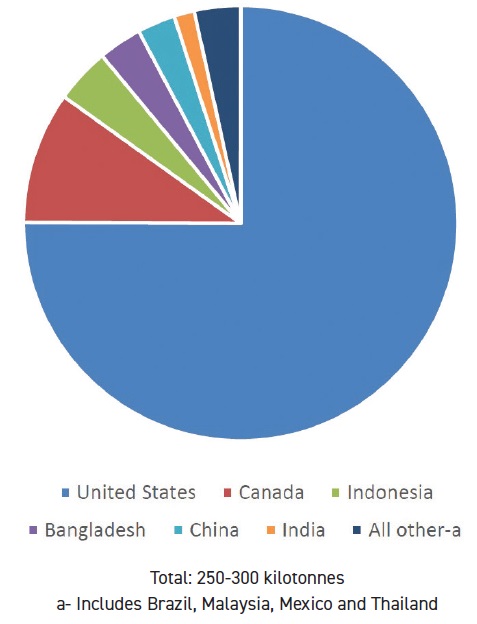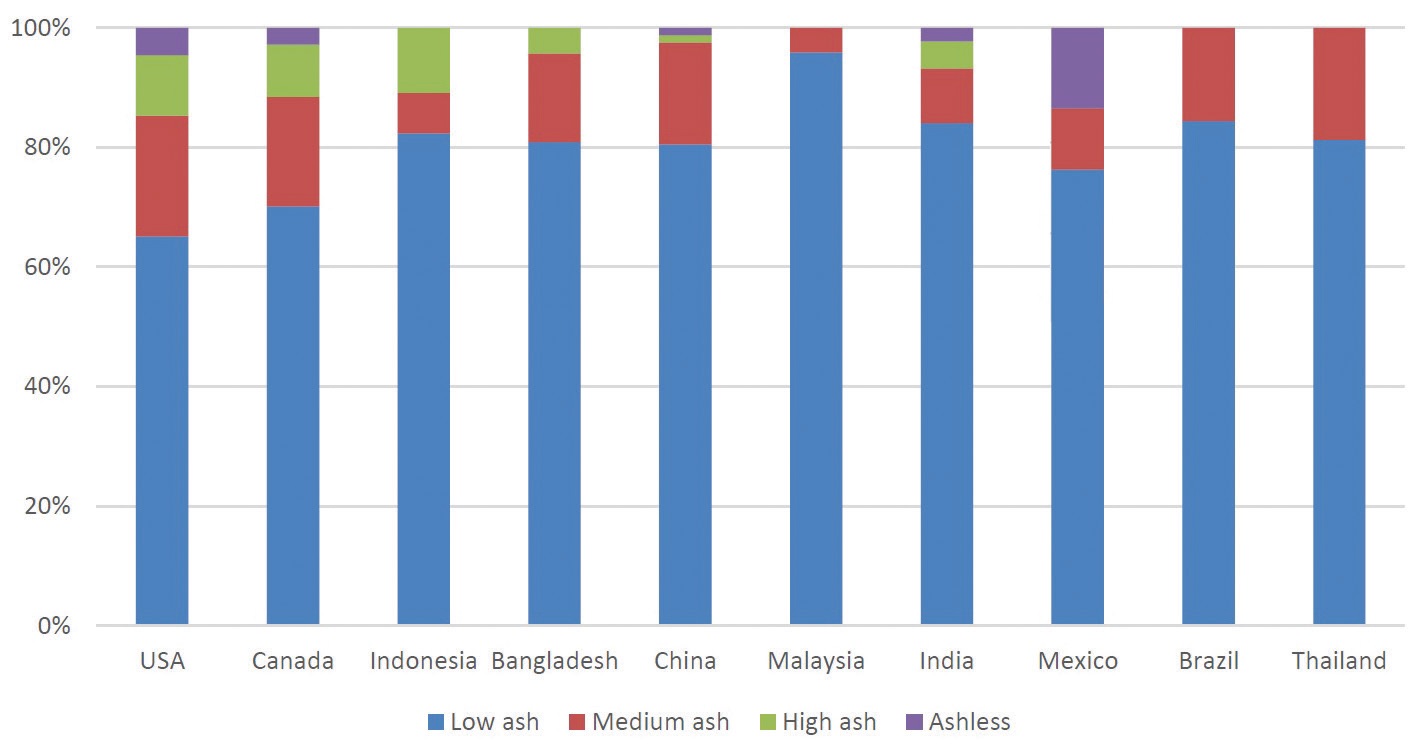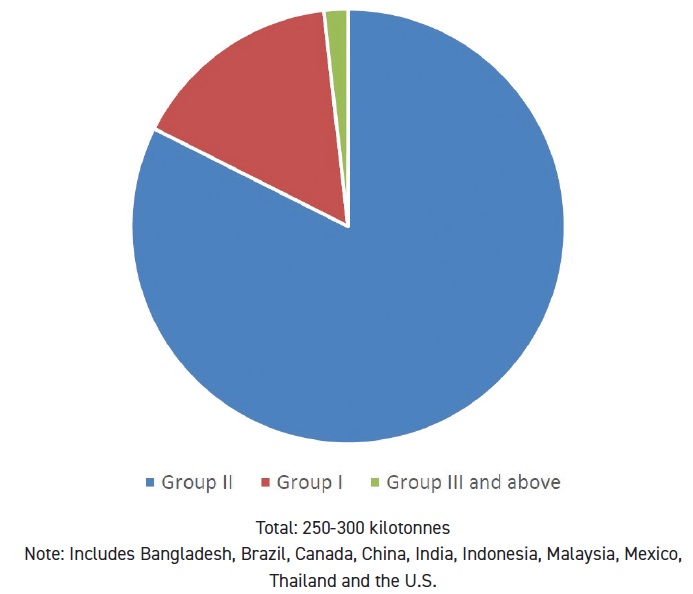Natural gas is a naturally occurring hydrocarbon consisting primarily of methane. It has a wide range of applications and is used both as fuel as well as raw material for manufacturing and industrial applications. As a fuel, it is used to generate electricity, drive vehicles, space heating, air conditioning and cooking, among other uses. As a feedstock, it is used in fertilizer and manufacturing industries. Along with natural gas, methane-containing renewable gases, including biogas and landfill gases, are being harnessed for power generation.
The United Nations Framework Convention on Climate Change, introduced in 1992, has been instrumental in driving consumption of natural gas, along with renewable sources of energy. Globally, while countries continue to debate on climate change due to the use of fossil fuels and other human activities, natural gas has emerged as an important source of energy despite being a fossil fuel due to its clean-burning property. Natural gas has lower greenhouse gas emissions, hence lower environmental impact when compared with other fuels like crude oil or coal.
Governments across the world have taken strategic initiatives such as providing subsidies for using natural gas and higher feed-in tariff for gas-based power generations. These initiatives, along with new natural gas discoveries and adoption of liquefied natural gas (LNG), have led to monetization of natural gas reserves to further increase its participation in global energy mix. According to the BP Statistical Review, natural gas is the third-largest primary energy source, accounting for slightly less than a fourth of global primary energy demand in 2017; its share is expected to increase to more than a fourth of global primary energy demand by 2040.
What is a natural gas engine?
A natural gas engine is an internal combustion engine that runs on a gaseous fuel such as natural gas. Though these engines are primarily designed for natural gas, they can operate with renewable gaseous fuels with slight modifications. This article is based on Kline's recent study titled Natural Gas Engine Oil: Global Market Analysis and Opportunities, which focuses on natural gas engines employed for power generation and mechanical drive applications such as driving compressors or pumps. The report forecasts on demand through 2023 and covers natural gas engine oil (NGEO) demand in 16 country markets in Asia-Pacific, Europe, North America and South America, but this article focuses on 10 markets in Asia (Bangladesh, China, India, Indonesia, Malaysia and Thailand) and the Americas (Brazil, Canada, Mexico and the U.S.).
Natural gas engines are used for generating electricity using natural gas or renewable gases as fuel. These engines can be used in natural gas power plants for peak sharing applications during high-electricity demand periods. They also are used for captive power and heat generation in industrial facilities and commercial as well as residential buildings. The mechanical drive operation includes use of natural gas engines to drive other equipment. For example, natural gas engines drive compressors that enable transmission of natural gas through pipelines or water pumps that are used for irrigation.
What is an NGEO?
NGEO is a lubricant type that not only lubricates natural gas engine components during an operation but also plays an important role in engine maintenance and reliability. NGEO consumption by the already mentioned 10 countries is estimated to range between 250 and 300 kilotonnes in 2018, with the U.S. leading the pack (
see Figure 1).
 Figure 1. NGEO demand in select countries in Asia-Pacific and the Americas, 2018.
Why a specialty oil?
Figure 1. NGEO demand in select countries in Asia-Pacific and the Americas, 2018.
Why a specialty oil?
NGEOs are used in engines that operate on gaseous fuel and, hence, require better lubrication. Besides, these engines operate at a higher exhaust temperature, making them more prone to oxidation and nitration. Unlike diesel and gasoline engine oils, NGEOs do not have API specifications, and each original equipment manufacturer (OEM) has its own specification. Nevertheless, in general, these oils are classified into different types in the market based on their composition in terms of base oil type, viscosity and ash content.
Ash content is an important criterion for selecting an NGEO, as it plays a very important role in the functioning of an engine. As the fuel burns in a gas engine, a layer of ash gets deposited on the engine parts such as valves and piston head, protecting them from acidic elements formed during the combustion process. Ash is derived from detergent additive added to the engine oil. In terms of ash content, NGEOs can be classified as high ash, medium ash, low ash and ashless oils.
Stationary four-stroke engines typically require some level of ash, so ashless oils are not recommended. However, in countries such as Mexico, ashless oils also are used due to lack of knowledge of maintenance personnel and their adoption of malpractices. Canada and the U.S. also find use of ashless oils for old engines that experience heavy ash deposits. Level of ash required in an NGEO depends on its application and the type of gas used in the engine. As a rule, it can be stated that the dirtier the gas used as fuel, the higher the ash content required in the engine oil (
see Figure 2).
 Figure 2. NGEO consumption breakup by ash content in select countries in Asia-Pacific and the Americas, 2018.
Figure 2. NGEO consumption breakup by ash content in select countries in Asia-Pacific and the Americas, 2018.
Monograde engine oils dominate the NGEO market, with SAE 40 being the most popular viscosity grade. It is estimated that monogrades account for 90% of NGEO demand in the 10 countries covered in this article. Use of multigrade NGEO is limited, as most OEMs recommend monogrades because these oils provide adequate protection. However, multigrade use is observed in engines, which are exposed to extreme operating conditions such as in low-temperature startups.
The type of base oil used in a country for formulating NGEOs is a function of suitability of the base oil and its supply-demand scenario in the country. Both Group I and Group II are technically suitable for formulating NGEOs. On an overall basis, Group II base oils lead in the select 10 country markets; however, there are countries like Indonesia, Malaysia and Thailand where the use of Group I is more common. Even in these countries, demand is shifting toward Group II base oils due to their better antioxidant properties and a narrowing price difference between Group II and Group I base oils (
see Figure 3).
 Figure 3. NGEO demand in select countries in Asia-Pacific and the Americas by base oil type, 2018.
Applications
Figure 3. NGEO demand in select countries in Asia-Pacific and the Americas by base oil type, 2018.
Applications
The applications of NGEOs are the same as those of natural gas engines. The lubricants that are used in automotive natural gas engines also are NGEOs; however, these lubricants are not in the scope of this article. As the article focuses only on stationary natural gas engines, NGEO demand can be broadly divided into two application areas: power generation and mechanical drive applications.
Power generation is estimated to account for about 30% of NGEO demand in the 10 countries, while mechanical drive accounts for the lion’s share. The demand is skewed toward mechanical drive application because in the U.S. and Canada, the two leading markets, this application accounts for a major share.
Market drivers
The most significant lubricant demand driver will be the use of natural gas engines for distributed power generation and captive power generation. Distributed power generation is a system in which several electric generation units at sites like industrial and commercial areas are used. These units use either natural gas engines or turbines for power generation and can be grid-connected. This system is used as a complimentary electricity supply for peak shaving in regions that face power supply shortages.
While gas turbines are mostly used for large power generation requirements, natural gas engines are preferred for peak shaving and captive power generation. Unlike turbines, engines provide modularity and hence are better at load following, which helps reduce operational and fuel costs. Consequently, engines are being used for distributed power generation in many countries.
Installed capacity of stationary power generation engines in the 10 countries is expected to witness double-digit growth through 2023. NGEO demand growth will not be uniform, as some countries will grow faster than the others, and none of the countries will experience market contraction in the next five years. Malaysia, Mexico and Brazil will witness robust growth, while the U.S., Canada and Bangladesh will witness modest growth.
While the outlook is positive for NGEO demand growth, factors such as natural gas supply constraints, withdrawal of government support, natural gas price volatility and its relative pricing with respect to other fuels, and bureaucracy affecting new natural gas projects could inhibit market growth.
Natural gas consumption and the growth of related infrastructure in many countries is restricted by its supply constraints. In countries like India, Bangladesh and Thailand, which depend on natural gas import due to insufficient production, there is always a feeling of uncertainty surrounding natural gas supply. This discourages many companies from installing new gas engine projects due to their high installation cost.
Many times natural gas infrastructure projects get postponed or shelved due to bureaucracy, which indirectly affects future growth prospects for the NGEO market. For example, Brazil has a few economic reforms in plan to bring more investments to the country. But if the reforms are not approved in the Brazilian Congress, investments in infrastructure can be delayed. Similarly, in Canada, LNG projects have not been able to take off due to multiple issues concerning regulations, red tape and protests from concerned parties.
Natural gas, despite it being a clean fuel, continues to face competition from coal for power generation in some countries. For example, India is working toward steam coal independency and has a policy focusing on promoting high-efficiency coal. This is because of limited availability of natural gas in the country and its high price in comparison to coal. Besides, natural gas price is linked to crude oil price, which lends volatility to its pricing. Natural gas price also fluctuates with season and, due to this price volatility, many users prefer using more dependable sources of energy such as diesel for back-up power generation.
Global climate change concerns have forced countries to move toward low-emission energy sources. While this trend is leading to growth in natural gas consumption, it is creating even faster growth for renewable sources of energy such as solar and wind. In China, a study suggests that on-shore wind and solar power will together account for more than 50% of total installation by 2050. Similarly, India is working to achieve about 40% of its power generation from non-fossil fuels by 2030. Accordingly, renewable energy sources are likely to seize prospects from natural gas.
Summation
The global NGEO market is likely to grow faster than the global finished lubricants market in the next five years. The market is not expected to go through sea change in terms of NGEO specifications and consumption norms. Viscosity grade SAE 40 will continue to dominate the market, while multigrades will remain a specialty. The trend of using low ash oils will continue because they are considered universal oils that can be used in most applications.
The future development of the NGEO market will require participation from every industry stakeholder in their respective fields. OEMs continue to focus on developing more efficient engines that can withstand higher temperatures and pressures. They also are focusing on developing engines that can work with different gas types. Lubricant and additive suppliers have the opportunity to work with OEMs in developing NGEOs that have longer drain intervals, are more stable and have high efficiency.
Sushmita Dutta is Project Manager-Energy for Kline. You can reach her at sushmita.dutta@klinegroup.com.
Kline is an international provider of world-class consulting services and high-quality market intelligence for industries including lubricants and chemicals. Learn more at www.klinegroup.com.